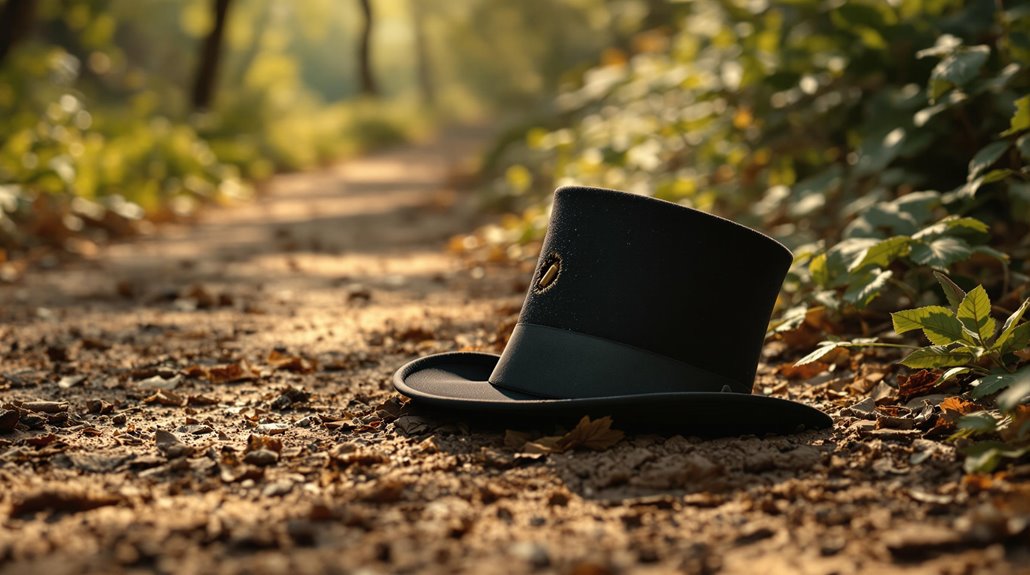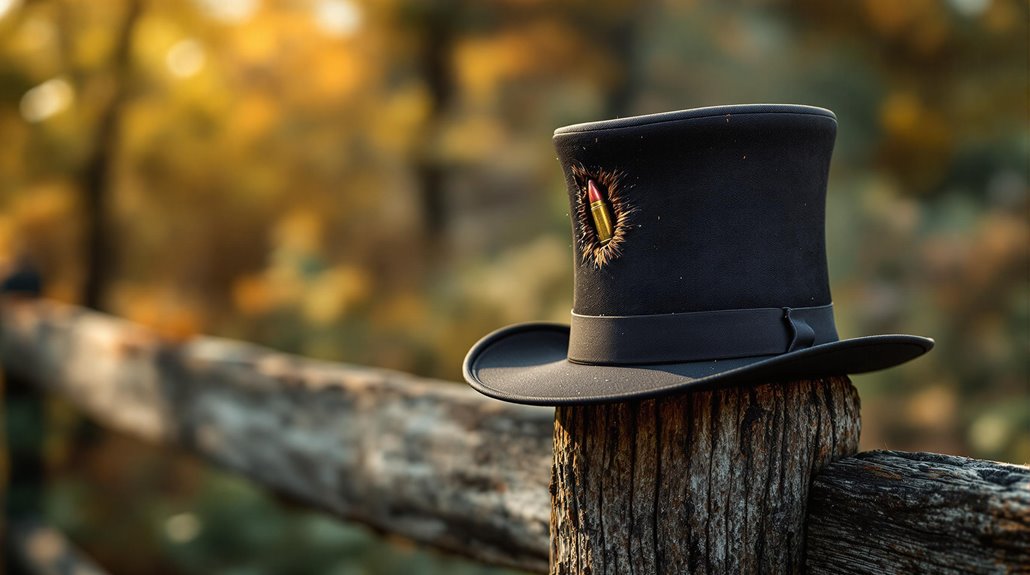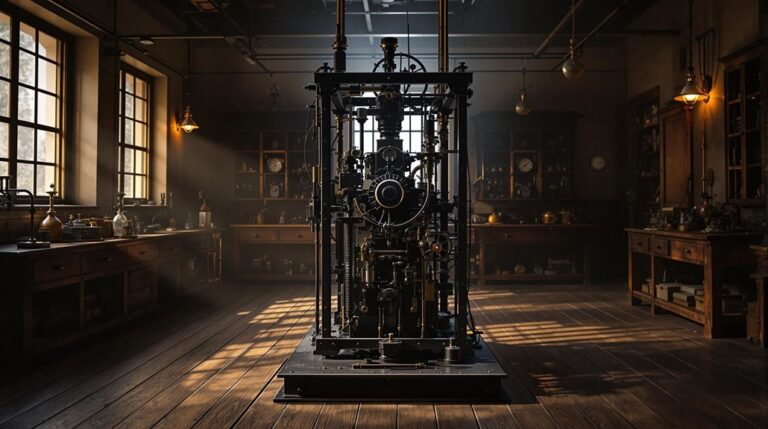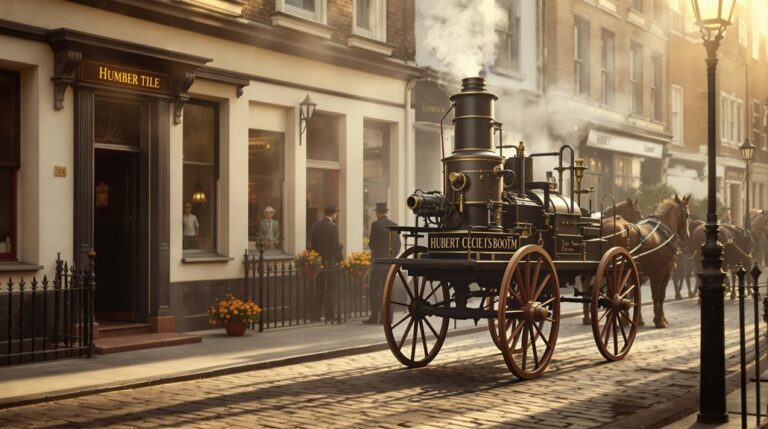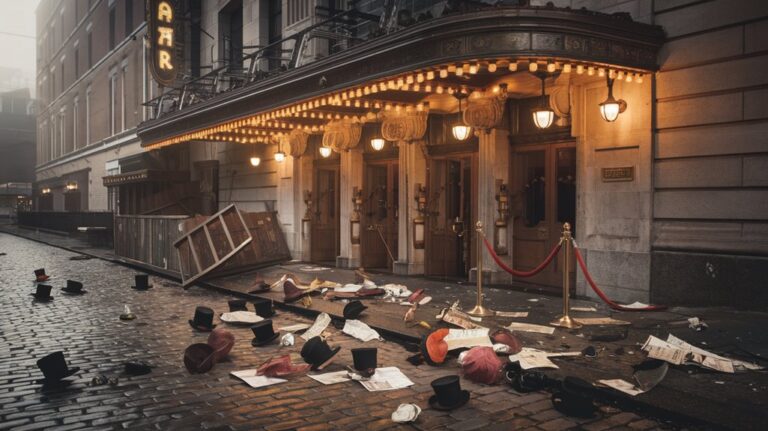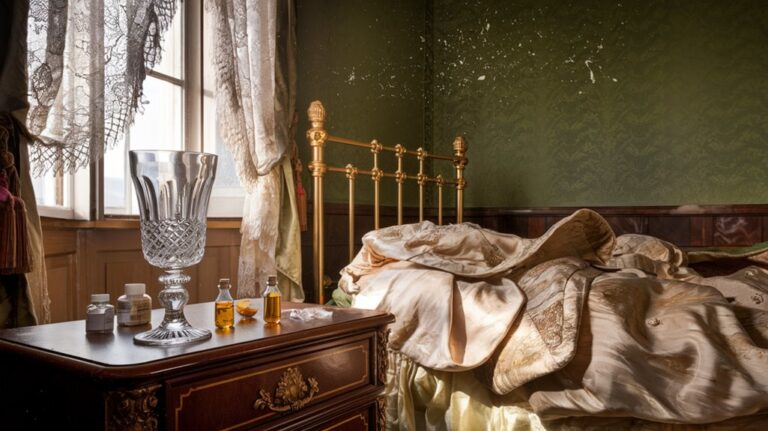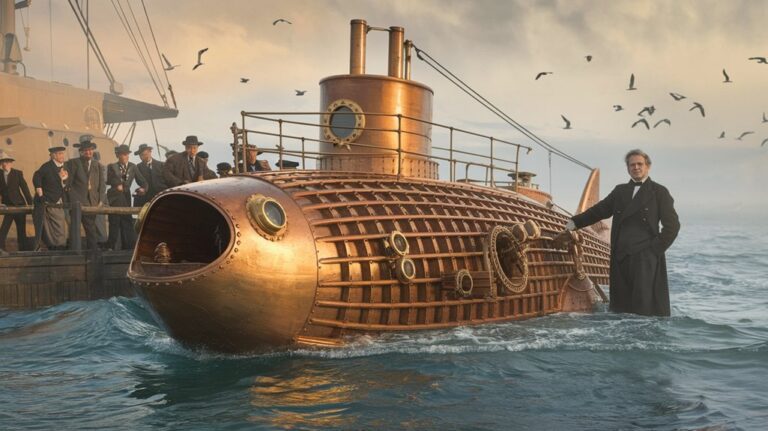Lincoln’s Hat Once Stopped an Assassination Attempt Bullet
You might think a tall hat would make someone an easier target, but Abraham Lincoln's iconic stovepipe actually saved his life. While riding alone near Soldiers' Home in August 1864, an unknown sniper's bullet pierced the president's beaver fur hat instead of his skull. It's a lesser-known episode that perfectly captures both Lincoln's luck and vulnerability during the Civil War – and there's more to this story than just a fortunate fashion choice.
The Night a Bullet Met Lincoln's Iconic Stovepipe
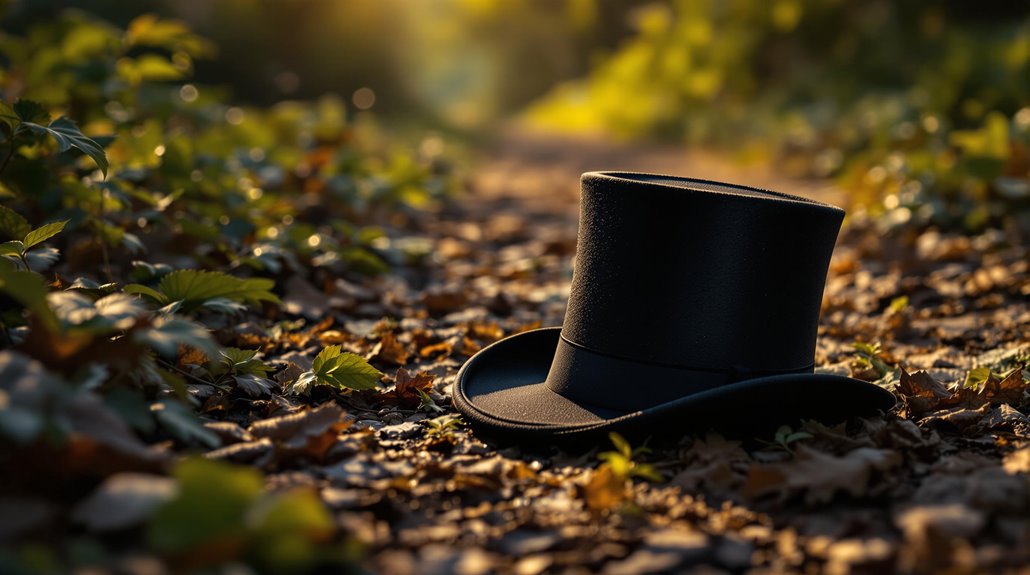
A single bullet pierced the darkness at Soldiers' Home in August 1864, forever changing the story of one of Abraham Lincoln's most recognizable accessories.
As the president rode horseback to his summer cottage around 11 p.m., an unidentified sniper's shot whistled through the night, striking his iconic stovepipe hat. The towering accessory, which added nearly three feet to his height, made him an easy target that evening. The distinctive hat, made from stiffened beaver fur, had been purchased from Washington hat maker J.Y. Davis.
You might wonder how Lincoln reacted to this stark reminder of his vulnerability. Despite the clear assassination attempt, he arrived bareheaded at the front gate, maintaining his characteristic calm.
Private John W. Nichols, on guard duty that night, discovered the hat at the intersection of the driveway and main road – the bullet hole through its crown serving as chilling evidence.
Lincoln, ever determined to maintain normalcy, dismissed the incident as an incompetent hunter's mistake and asked those present to keep quiet.
A Presidential Fashion Statement Turned Life Saver
That fateful night at Soldiers' Home proved Lincoln's iconic stovepipe hat wasn't just a fashion choice – it was an unexpected shield.
What began as a distinctive fashion symbolism evolved into an item of remarkable historical significance when it saved the president's life.
You'll find Lincoln's stovepipe hat served multiple purposes beyond its well-known style:
- Protected important documents within its 7-8 inch height
- Shielded him from harsh weather conditions
- Made him instantly recognizable in crowds
- Served as an unintended bulletproof barrier
The hat's transformation from a simple Knox Great Hat and Cap purchase to a life-saving device showcases how seemingly ordinary items can become extraordinary.
Despite discovering the bullet hole in his hat, Lincoln surprisingly dismissed the incident as possibly accidental.
Today, this famous size 7-1/8 hat stands as more than just a symbol of Lincoln's presidency – it's a reflection of how fate sometimes works through the most unexpected channels.
During the Battle of Fort Stevens, military officers urged Lincoln to take cover as his height and hat made him an easy target for Confederate snipers.
The Mystery of the August 1864 Shooter
Who fired the shot that pierced President Lincoln's hat on that dark August night in 1864? This unsolved mystery has puzzled historians for generations.
The shooter, positioned near the roadside, fired upward at the lone president as he rode to Soldiers' Home around 11 p.m.
While Lincoln downplayed the incident as the work of an "incompetent hunter," the historical implications suggest otherwise. Confederate sympathizers were active in the area, and the timing – just eight months before Lincoln's eventual assassination – raises questions about possible connections. Similar to this incident, Booth and conspirators had initially planned to kidnap Lincoln before their plot evolved into assassination. Reports revealed that Lincoln had already experienced dark premonitions about his death through disturbing dreams.
The president's request to keep the incident quiet, coupled with his admission of hearing the bullet whistle uncomfortably close, indicates he may have been more rattled than he let on.
Despite extensive investigation at the time, the identity of the would-be assassin remains unknown.
Tales From the Soldiers' Home Ride
Lincoln's daily rides between the White House and Soldiers' Home revealed more than just the perils he faced.
Along his route, you'd find him encountering both friends and foes, turning his three-mile commute into an informal meeting ground for political discourse. Allan Pinkerton's team had discovered the assassination plot in Baltimore, making Lincoln's security during these daily rides even more crucial.
The Soldiers' Home interactions proved particularly revealing, as Lincoln used these moments to:
- Discuss war strategies with military leaders
- Share candid observations about his generals
- Connect with soldiers guarding his escort
- Observe the war's impact through passing ambulances and contraband camps
Despite security concerns and Ward Hill Lamon's protective presence, Lincoln often attempted to travel alone, much to his advisors' dismay.
Even when Confederate forces approached Fort Stevens in 1864, he remained defiant, resisting Secretary Stanton's orders to return to the White House.
When Height and Fashion Created a Target
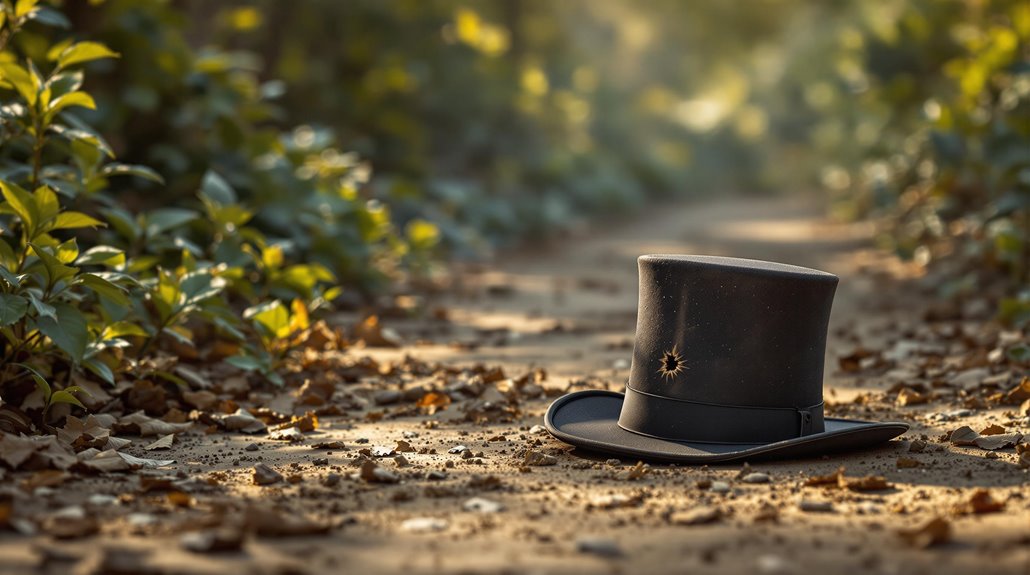
Standing at an imposing 6 feet 4 inches, the President's already remarkable height became even more pronounced when topped with his signature stovepipe hat, creating a nearly seven-foot silhouette that made him instantly recognizable wherever he went.
You'd think Lincoln's stature would have made him reconsider his choice of headwear, especially during wartime. His distinctive hat symbolism, while perfect for political cartoons and public recognition, also made him dangerously visible to those who wished him harm.
Whether at formal events or battlefield visits, you could always spot Lincoln towering above the crowds in his silk top hat. While the hat served practical purposes, like protecting him from weather and storing important papers, it also transformed him into what military advisers worried was "too tall a target" during dangerous times.

